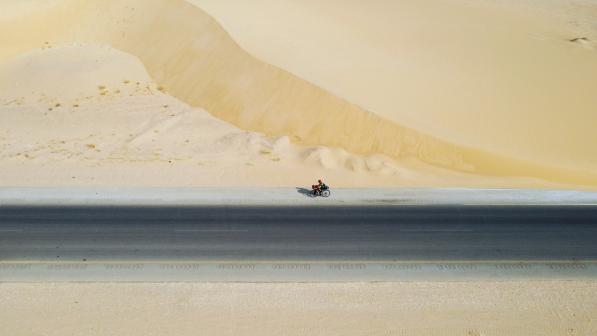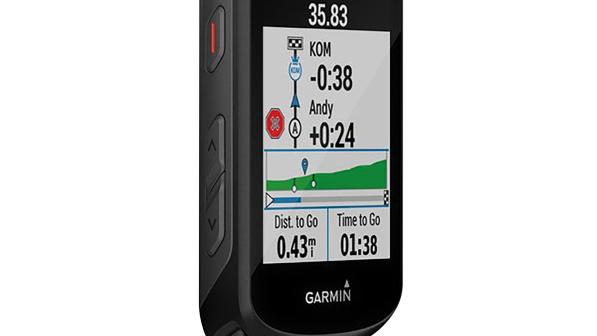Great rides: bikepacking around unsurfaced Ireland

Of the four home nations, Northern Ireland was the only one I hadn’t yet explored by bike. Expectations for my weeklong trip were high. I’d been told that the island of Ireland – I’d also be visiting the Republic – had a lot to offer. What surprised me was just how much.
The ancient and more recent history of the country lay at the edge of each road, trail and town. Signposts to stone circles, old pilgrimage routes and megalithic tombs were interspersed with memorials, monuments and plaques from the more recent history of the Troubles in Northern Ireland.
Landscapes ranged from dramatic mountains draped in clouds to forests and farmland that filtered those that lived in the countryside towards cities like Belfast and Derry-Londonderry.
Beginning the journey in Southampton, I packed my gravel bike in a cardboard box from the local Halfords and got a lift to the airport. Arriving in Belfast that evening, I opted to stay the night in the city, which gave me enough time to set the bike up properly. The bike box had arrived a little battered but all seemed well. That was until I began cycling the next day…
Biking around Belfast
Only an hour and eight miles into the ride, my gear cable snapped. Fortunately, I had spent that first hour cycling to different spots across Belfast, visiting places that paid tribute to pivotal points during the Troubles. Stuck in 12th gear, I pedalled into the city centre to hunt for a bike shop.

Bicycle Coffee Shop was one of the most helpful I’ve ever visited. Despite not being open, they were kind enough to let me in early and sort me out. While they worked on the bike, they shared suggestions and detours to fine tune my route. Their kindness and expertise were unmatched.
Before I left they even offered to help box up my bike and drive me to the airport for free when I returned in seven days. I couldn’t have wished for a better start to my trip, and thanked them profusely for their help.
Besides the initial bad luck, the first day was blessed with sunshine, rolling hills and stunning scenery. Light bounced off emerald grass swaying gently in a light breeze, and I was reminded, as I often am, of the wonderful serendipity of cycling.
Travelling by bike is one of the greatest ways to see the spaces between destinations, which is why I’ve taken to bringing a sketchbook with me to remind myself to stop and appreciate those rarely seen places.
Hard miles, soft days
My route took me north out of Belfast and towards the edge of Glenariff Forest Park. By day two I had hit one of the most northerly parts of Ireland, passing the Dark Hedges avenue of beech trees made famous by the Game of Thrones TV series, before following the coast west towards the Giant’s Causeway.

Each day took me deeper into the wild. Hills turned to mountains and the weather progressively worsened. I only enjoyed dry days at the beginning and end, and in between faced some of the most challenging downpours and headwinds I’ve ever encountered on a bike.
On the third day I navigated along the northern coast, following it all the way to Magilligan Point. Cycling UK’s Northern Ireland lead, Andrew McClean, had recommended this route so I could catch the ferry over to the Republic, which would avoid having to cycle south for another 20 miles to enter Derry-Londonderry.
The recommendation turned out to reveal a hidden gem. Just before reaching Magilligan, I followed the cycle trail from Portstewart to a National Trust forest where I found Mussenden Temple.
After a little bit of exploring, I climbed Dungannon Hill where I followed the ridgeway to Gortmore viewpoint. With a clear horizon there were panoramic views, letting me see all the way to the heart of Donegal, to the islands of Islay and Jura off the west coast of Scotland and over to the campsite where I was planning to stay that night, prior to catching the ferry.

Standing beside me as I gazed around was a statue of Manannán mac Lir, a figure from Irish mythology associated with the sea. The statue’s hands were parted wide, as if it were taking in the view.
On day four I took the mountain pass bridleway through Glenveagh National Park towards Lough Veagh. Clouds formed around me as I cycled through misty rain between the mountains of Bingorms and Moylenanav, bringing me to the edge of the pass.
The clouds parted as I turned the corner, and for the next 20 minutes I descended on a gravel track beneath partially blue skies while the sun helped to dry out my kit. I couldn’t believe my luck.
Campsite camaraderie
Camping each night took me to some incredible places in the heart of Ireland’s wilderness but, more than that, it put me on the same track as others on their own adventures.
Throughout the journey, I met motorcyclists exploring the Wild Atlantic Way, hikers who meandered between national parks, dozens of American tourist groups in matching beige hats, and a small number of cyclists navigating the TransAtlanticWay.

I had expected to see far more cyclists but the route I had planned was quiet and peaceful, only touching on parts of the TransAtlanticWay. Some days I didn’t see a single other person until I arrived at camp.
At one point on the route, I stayed at a campsite where I met a lawyer from the Good Law Project who worked to secure abortion rights for women in Northern Ireland. We spoke at length over morning coffee, talking about the challenges and strategies associated with that kind of work.
At another, I spent hours talking to a man from the Republic who explained the local stone circles, Irish folklore and how it had survived in the Irish language through phrases passed down over dozens of generations.
The last days of my trip gave me time to reflect on everything I had seen and heard. Both Northern Ireland and the Republic of Ireland had offered so much. The landscape frequently took me from gravel-track wilderness to populated hubs, bustling with life and lived history.
I might have had to push through four hours of torrential rain and horrible headwinds at one point, but I had seen puffins, wild deer and Irish hares. I had explored both countries and gained some understanding of their complex pasts.
Cycle magazine
Every two months Cycling UK members receive Cycle magazine, filled with interesting and informative articles, news and reviews for all cyclists.
Members can read the magazine in full online; non-members can read selected highlights.




